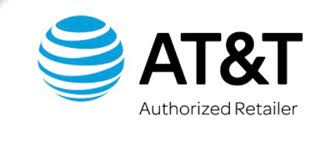AT&T Internet

(844) 319-1735
- PRICE RANGE $40 to $80 / mo.
- TECHNOLOGY DSL
- SPEED RANGE (DOWNLOAD) 6.0 mbps to 1,000 mbps
- SPEED RANGE (UPLOAD) 1.0 mbps to 1,000 mbps
AT&T Internet OVERVIEW
AT&T U-Verse is a bundled broadband Internet, phone, and digital TV provider. They provide connectivity via both DSL and fiber networks.
AT&T Internet TECHNOLOGY
AT&T offers fiber optic and hybrid DSL internet connections to many residential consumers and businesses across the US. They also offer a variety of “triple play” plans with bundled TV and home phone service.
Their DSL offering, historically known as AT&T U-verse, leverages a fiber-to-the-node (FTTN) layout where fiber optic cable terminates at a point near consumers, with the final stretch to the subscriber residence reached via telephone, ethernet, and in some rare cases coaxial cable. This hybrid fiber network has allowed AT&T to offer higher bandwidth plans than traditionally expected from DSL.
In addition to their DSL offering, AT&T also offers fiber-to-the-home (FTTH) in some areas. FTTH is considered the “gold standard” for strong, fast, and reliable home internet connection.
AT&T Internet RATINGS AND REVIEWS


41.0% recommendation rating according to 92,956 verified users.
WOW!

(888) 317-7540
- PRICE RANGE $29.99 to $59.99 / mo.
- TECHNOLOGY Cable
- SPEED RANGE (DOWNLOAD) 10 mbps to 1,000 mbps
- SPEED RANGE (UPLOAD) 1.0 mbps to 50 mbps
WOW! OVERVIEW
WOW! is a bundled cable TV, broadband Internet, and phone provider. The name “WOW!” stands for “Wide Open West.” The company also offers fiber Internet connectivity in select areas.
WOW! TECHNOLOGY
WOW! offers a variety of broadband connection types, including cable, DSL, fixed wireless, and fiber, often bundled with cable television and phone offerings. As of 2016, their fiber-to-the-home (FTTH) is available in select areas and scheduled to expand based on consumer demand.
Cable broadband, WOW!’s most prevalent option, is usually delivered via hybrid fiber coaxial (HFC) networks. In this type of network, most of the distance between the provider and consumer is covered by high-speed fiber optic cables. Once it reaches a neighborhood, the fiber terminates at a node where data is switched from optic signal to electrical signal for transmission over existing coaxial copper television networks.
While pure fiber-to-the-home (FTTH) connections are the “gold standard” of next-generation broadband technologies — delivering speeds up to 1Gbps in ideal scenarios — WOW! is working to deploy DOCSIS 3.1 to their HFC networks. This advanced protocol, an improvement on the current DOCSIS protocols used to transmit binary data over coaxial cables, will allow some HFC networks to achieve gigabit speeds rivaling FTTH offerings.
WOW! RATINGS AND REVIEWS



